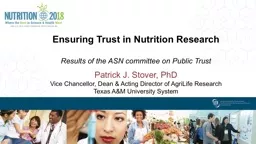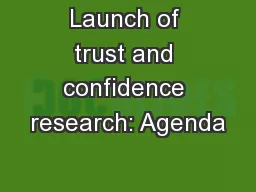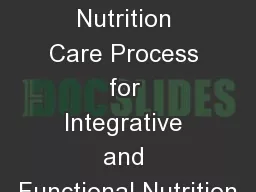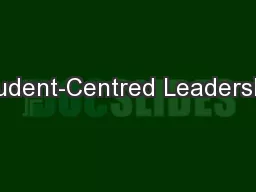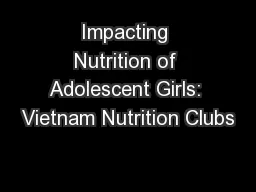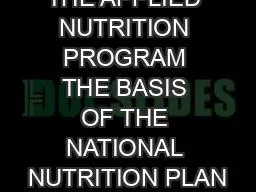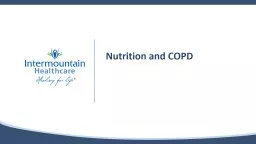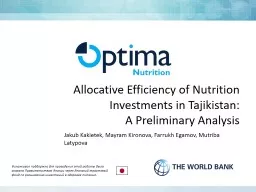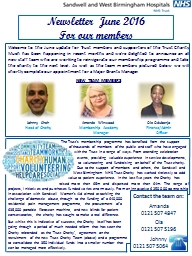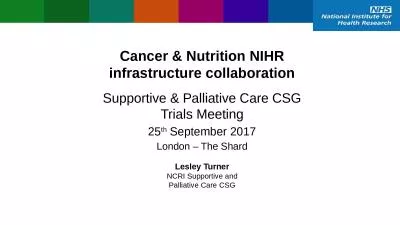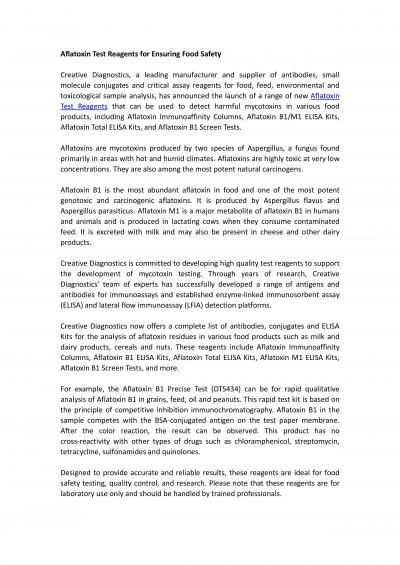PPT-Ensuring Trust in Nutrition Research
Author : unisoftsm | Published Date : 2020-06-23
Results of the ASN committee on Public Trust Patrick J Stover PhD Vice Chancellor Dean amp Acting Director of AgriLife Research Texas AampM University System The
Presentation Embed Code
Download Presentation
Download Presentation The PPT/PDF document "Ensuring Trust in Nutrition Research" is the property of its rightful owner. Permission is granted to download and print the materials on this website for personal, non-commercial use only, and to display it on your personal computer provided you do not modify the materials and that you retain all copyright notices contained in the materials. By downloading content from our website, you accept the terms of this agreement.
Ensuring Trust in Nutrition Research: Transcript
Download Rules Of Document
"Ensuring Trust in Nutrition Research"The content belongs to its owner. You may download and print it for personal use, without modification, and keep all copyright notices. By downloading, you agree to these terms.
Related Documents

